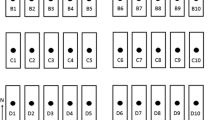Abstract
Identifying sites meeting wetland hydrology requirements is simple when long-term (> 10 years) records are available. Because such data are rare, we hypothesized that a single-year of hydrology data could be used to reach the same conclusion as with long-term data, if the data were obtained during a period of normal or below normal rainfall. Long-term (40–45 years) water-table and rainfall data were obtained for two sites in North Carolina (with modeling), and one site in Minnesota (direct measurements). Single-year wetland hydrology assessments were made using two-rainfall assessment procedures recommended by the U.S. Army Corps of Engineers for their Wetland Hydrology Technical Standard, and two other rainfall assessment methods that were modifications of those procedures. Percentages of years meeting wetland-hydrology conditions during normal or drier than normal periods were identified for each plot with each rainfall assessment method. Although the wetland hydrology criterion was met in over 90% of the years across all plots using the long-term records, the four assessment techniques predicted the criterion was met in 41–81% of the years. Based on our results, we recommend that either the Direct Antecedent Rainfall Evaluation Method, or its modified version, be used for wetland hydrology assessment.
Similar content being viewed by others
Literature Cited
Environmental Laboratory. 1987. U.S. Army Corps of Engineers wetland delineation manual. U.S. Army Corps of Engineers Waterways Experiment Station, Vicksburg, MS, USA. Technical Report Y-87-1.
Hayes, W. A. and M. J. Vepraskas. 2000. Morphological changes in soils produced when hydrology is altered by ditching. Soil Science Society of America Journal 64: 1893–1904.
He, X., M. J. Vepraskas, R. W. Skaggs, and D. L. Lindbo. 2002. Adapting a drainage model to simulate water table levels in coastal plain soils. Soil Science Society of America Journal 66: 1722–31.
He, X., M. J. Vepraskas, D. L. Lindbo, and R. W. Skaggs. 2003. A method to predict soil saturation frequency and duration from soil color. Soil Science Society of America Journal 67: 961–69.
Hershfield, D. M. 1961. Rainfall frequency atlas of the United States for durations from 30 minutes to 24 hours and return periods from 1 to 100 years. National Weather Bureau, Washington, DC, USA. Technical Paper No. 40.
Hunt, W. F., III, R. W. Skaggs, G. M. Chescheir, and D. M. Amatya. 2001. Examination of the wetland hydrologic criterion and its application in the determination of wetland hydrology status. University of North Carolina Water Resources Research Institute, Raleigh, NC, USA. UNC-WRRI-2001-333.
Kolka, R. K., D. F. Grigal, E. S. Verry, and E. A. Nater. 1999. Mercury and organic carbon relationships in streams draining forested upland/peatland watersheds. Journal of Environmental Quality 28: 766–75.
Mitsch, W. J. and J. G. Gosselink. 2000. Wetlands. 3rd Ed. John Wiley & Sons, New York, NY, USA.
Skaggs, R. W. 1999. Drainage simulation models. p. 461–492.In R. W. Skaggs et al. (ed). Agricultural drainage. Agronomy Monograph No. 38. ASA, CSSA, and SSSA, Madison, WI, USA.
Sprecher, S. W. and A. G. Warne. 2000. Accessing and using meteorological data to evaluate wetland hydrology. U.S. Army Corps of Engineers, Engineer Research and Development Center, Vicksburg, MS, USA. ERDC/EL TR-WRAP-00-01.
U.S. Army Corps of Engineers. 2005. Technical standard for water-table monitoring of potential wetland sites. U.S. Army Corps of Engineers, Research and Development Center, Vicksburg, MS, USA. ERDC TN-WRAP-05-2.
U.S. Department of Agriculture, Natural Resources Conservation Service. 2008. Technical standards for hydric soils. National Technical Committee for Hydric Soils Technical Note 11. http://soils.usda.gov/use/hydric/ntchs/tech_notes/index.html.
Vepraskas, M. J. and P. V. Caldwell. 2008. Interpreting morphological features in wetland soils with a hydrologic model. Catena 73: 153–65.
Vepraskas, M. J., X. He, D. L. Lindbo, and R. W. Skaggs. 2004. Calibrating hydric soil field indicators to long-term wetland hydrology. Soil Science Society America Journal 68: 1461–69.
Verry, E. S. and A. E. Elling. 2005. Marcell Experimental Forest cumulative hydrology database, 1960–2000. Product Identification Number RDS-NC-4351-2005-001. http://ncrs.fs.fed.us/pubs/databases/nc-4351-2005-001/.
Verry, E. S. and R. K. Kolka. 2003. Importance of wetlands to streamflow generation. p. 126–132.In K. G. Renard, S. A. McElroy, W. J. Gburek, H. E. Canfield, and R. L. Scott (eds.) Proceedings of The First Interagency Conference on Research in the Watersheds, Tucson, AR, USA. U.S. Department of Agriculture, Agricultural Research Service, Washington, DC, USA. http://www.tucson.ars.ag.gov/icrw/proceedings.htm.
Author information
Authors and Affiliations
Rights and permissions
About this article
Cite this article
Sumner, J.P., Vepraskas, M.J. & Kolka, R.K. Methods to evaluate normal rainfall for short-term wetland hydrology assessment. Wetlands 29, 1049–1062 (2009). https://doi.org/10.1672/09-026D.1
Received:
Accepted:
Issue Date:
DOI: https://doi.org/10.1672/09-026D.1




